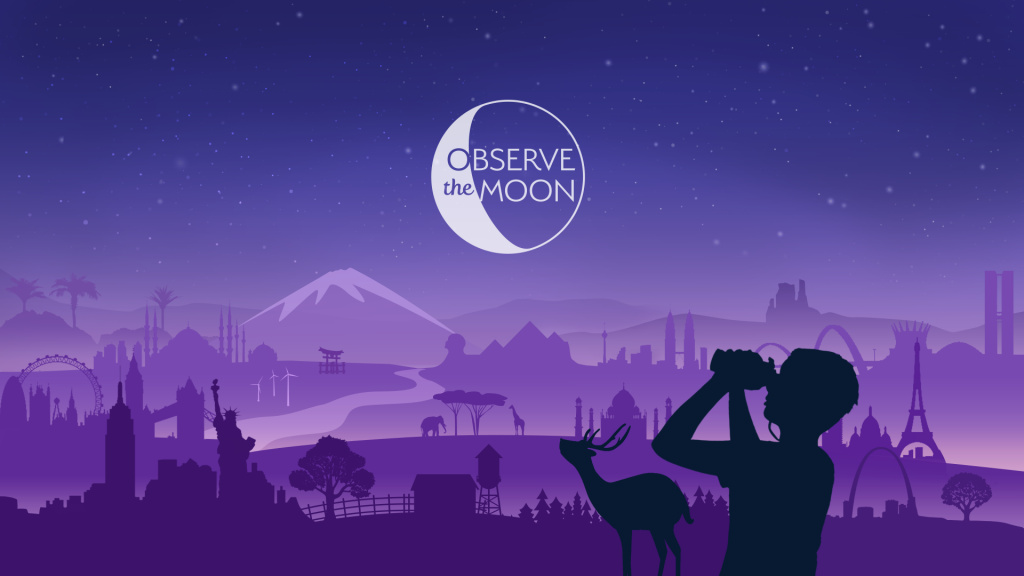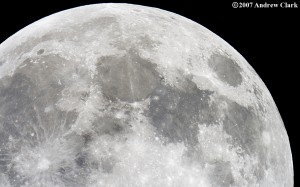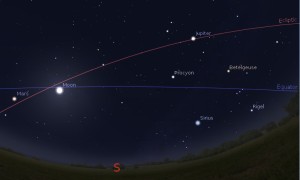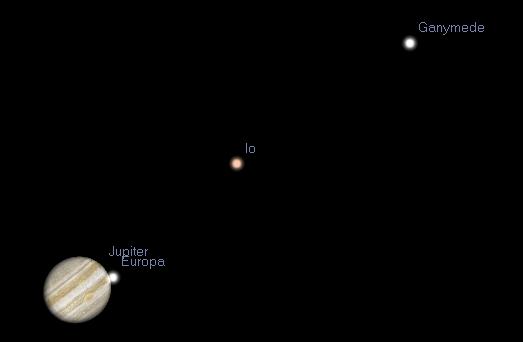What is a total lunar eclipse?
A lunar eclipse occurs when the Moon moves into the shadow of the Earth. When the Moon is completely covered by the darkest part of the Earth’s shadow (called the umbra), then the eclipse is said to be total. Lunar eclipses only ever occur at the full Moon, as the Earth must be between the Sun and Moon to cast a shadow on the Moon.
What will it look like?

Lunar eclipse in 2008 as viewed from the USA. Photographed by John Buonomo, retrieved from Wikimedia Commons
The first parts of the eclipse when the Moon is in the lighter part of Earth’s shadow (called the penumbra) are very hard to see. In this partial eclipse phase, if you’re in a very dark location and looking carefully, you may notice a darkening of parts of the Moon’s surface.
The real interesting viewing starts when the total eclipse phase begins. At this time, the only light reaching the Moon from the Sun is light that passes just around the edges of Earth through its atmosphere. The blue colours of the sunlight get scattered away and only the redder colours reach the surface of the Moon to be reflected back for us to see. The Moon will be darker than usual and probably tinted red/orange. Exactly how much it’s tinted depends on atmospheric conditions at the time of the eclipse.

When you can I see it?
The total eclipse will begin Tuesday morning (April 15) at 4:07 am in local time for PEI. The total eclipse stage, when the Moon will look darkest and possibly reddish-orange, will last until 5:25 am. Some of the most interesting moments to watch can be just as totality is beginning (start viewing by 4:00am) or just as totality ends (start viewing by 5:20am).
Watching the entire eclipse can be kinda long and boring, but if you set your alarm clock for an appropriate time in the early morning, you can get up, watch the eclipse for however many minutes you feel like, and then probably still get back to bed for an extra hour or more of sleep before starting your day.
What if it’s cloudy?
If the weather doesn’t cooperate with viewing the eclipse in PEI (i.e. the Moon is blocked by clouds), you can watch the eclipse online in a broadcast by NASA or by Slooh Observatory.








